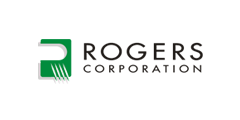Lower Your Total Cost of Ownership with High Performance Si3N4 AMB Substrates

Silicon Nitride (Si3N4) Active Metal Brazed (AMB) substrates are becoming increasingly popular for multi-chip power modules as a tool for achieving the highest possible power densities. This is due to their excellent thermal and mechanical properties. Nevertheless, as pressures on cost and performance continue to increase alongside the growing importance of power semiconductors in applications — e.g., electric vehicles and energy storage — innovations are needed to address the evolving needs of the market. Fortunately, a new Si3N4 raw ceramic material is now available, and ROGERS is leveraging its strong partner network to deliver large-scale production of higher-performing Si3N4 AMB substrates.
Improvement of the Si3N4 ceramic microstructure
The intrinsic material properties of Si3N4 indicate that its thermal conductivity can be more than 200 W/mK. However, multiple factors, including the raw materials' purity and, particularly, the control of the oxygen content, the orientation of β- Si3N4 grains, and the glassy phase at the grain boundaries are limiting the thermal conductivity of currently available Si3N4 raw ceramic substrates. Nowadays, typical values for commercially available products are range between 80 and 90 W/mK at room temperature.
Manufacturers of Si3N4 raw ceramic substrates are working hard to improve thermal conductivity. Research has shown that it's possible to produce Si3N4 raw ceramic substrates with thermal conductivity up to 177 W/mK. Also, optimized process conditions have been shown to improve thermal conductivity in the thickness direction as opposed to the in-plane direction. These efforts are paying off. The latest results show that thermal conductivity in the range between 110 and 130 W/mK at room temperature is feasible, not only at lab scale but also under serial production conditions. In addition, the raw ceramic substrates´ mechanical properties remain very good with characteristic values of the bending strength in the range of 600-700 MPa.
New Si3N4 AMB substrates for higher power densities
These recent advancements open new opportunities for the design of power modules. A reduction of the thermal resistance can be achieved with the same ceramic thickness which is already used for existing power modules. Consequently, module makers can upgrade the output power of their existing modules by an easy drop-in replacement of the substrate. There would be no need to redesign the packaging, and there would be no additional tooling costs. Assembly and interconnection technologies remain unchanged, so the new solution could be brought to market in a very timely manner.
Another way to look at it is to utilize these substrates with higher thermal conductivity to achieve a reduction of chip area and hence chip cost savings. This could be interesting particularly for silicon carbide (SiC) modules because SiC devices are much more expensive than their silicon counterparts and are therefore the main cost driver for the modules. Besides, SiC technology is likely to make significant progress in the coming years. One can expect new generations of smaller chips with a lower specific on-state drain to source resistance to come to the market very soon. In this case, the higher thermal conductivity of the ceramic can compensate for the smaller chip area.
Ultimately, higher power densities can be achieved without any compromise on the modules´ lifetime. The higher thermal conductivity does not only limit the increase of the chip junction temperature but also, the superior mechanical properties are advantageous when the substrates are exposed and must resist harsh thermal cycling conditions.
Rogers at the forefront of substrate development
As the market and technology leader for metalized ceramic substrates, Rogers has quickly identified the opportunity to unleash the commercial and technological potential of such innovative products. Rogers is now capable of delivering Si3N4 AMB substrates with improved thermal performance to its broad customer base. While the final qualification is ongoing, the first samples are already available for customer evaluation. Furthermore, thermal simulations can be performed to understand the substrates´ potential benefits for your application.
We are currently expanding our AMB production footprint to offer the largest available capacity worldwide from one single supplier as a response to the increasing market demand. Rogers has been committed to the power electronics industry with its curamik® brand for almost 40 years and is ready to tackle the challenges of the next decades.
- +1 Like
- Add to Favorites
Recommend
- Applications for Metallized Ceramic Substrates
- Rogers curamik® Ceramic Substrates offer superior thermal properties and have applications in many of the world‘s most advanced electronic systems
- Rogers Germany GmbH Receives TOP 100 Seal for Successes in Innovation,Which Has Made a Name for Itself in the Field of Ceramic Substrates and Cooling Solutions
- II-VI Incorporated Signs Multi-Year Contract to Supply Infineon with Silicon Carbide Substrates for Power Electronics
- Rogers Expanding Power Substrate Capacity in China to Meet Growing EV and Renewable Energy Demand
- Rogers Corporation’s Power Electronics Solutions Group to Showcase curamik® Ceramic Substrates & ROLINX® Eco Busbars at the PCIM 2023
- Rogers Corporation’s Curamik® Ceramic Substrates, Low Inductive ROLINX® Laminated Busbars Power Renewable Energy Sources
- Rogers Announces Acquisition of Silicone Engineering
This document is provided by Sekorm Platform for VIP exclusive service. The copyright is owned by Sekorm. Without authorization, any medias, websites or individual are not allowed to reprint. When authorizing the reprint, the link of www.sekorm.com must be indicated.





























































































































































































































































































































































































































































































































































































































































































































































































































































































